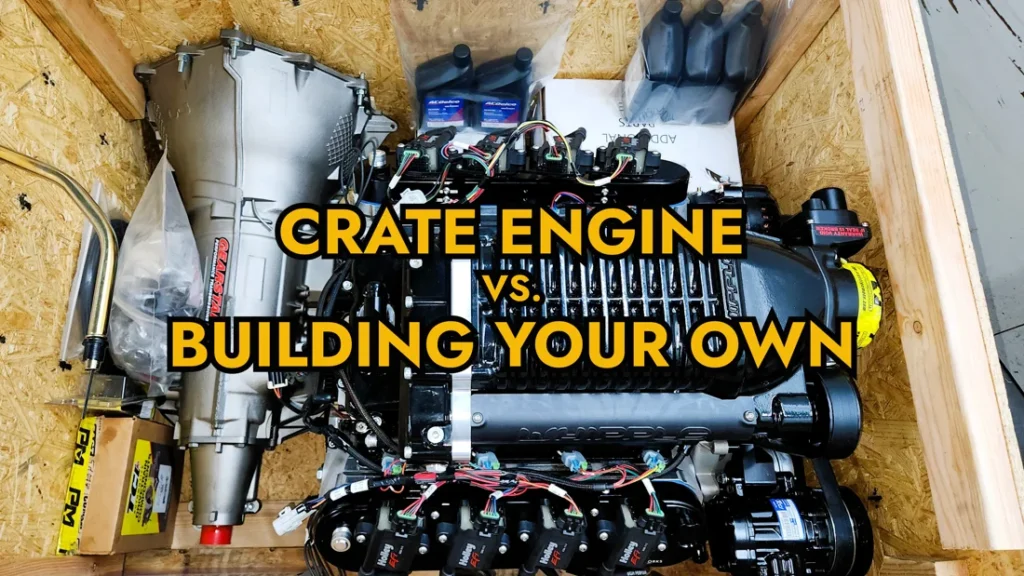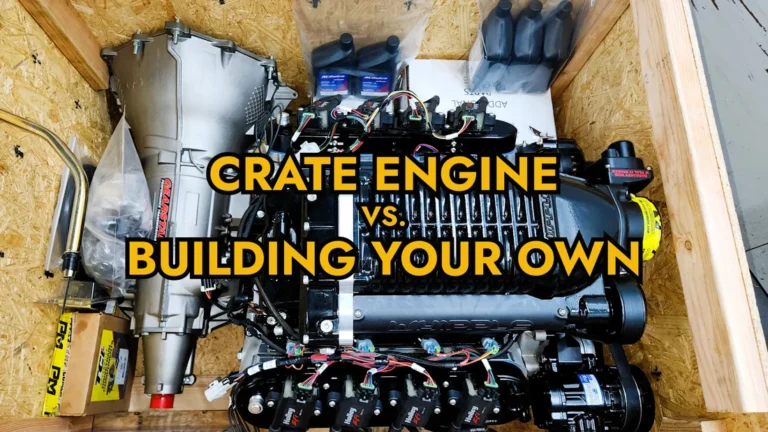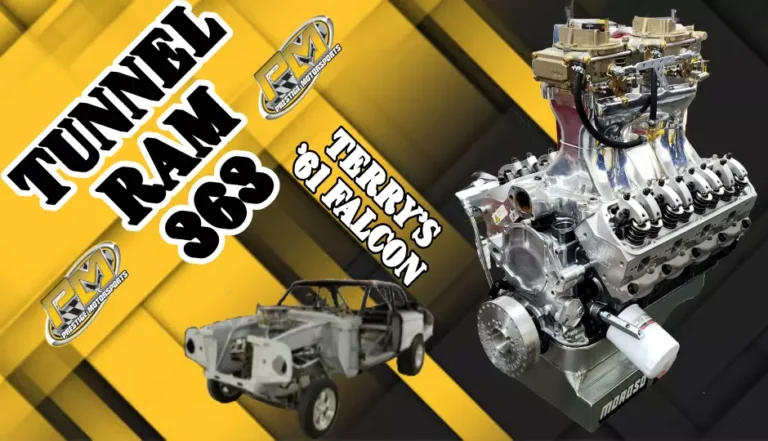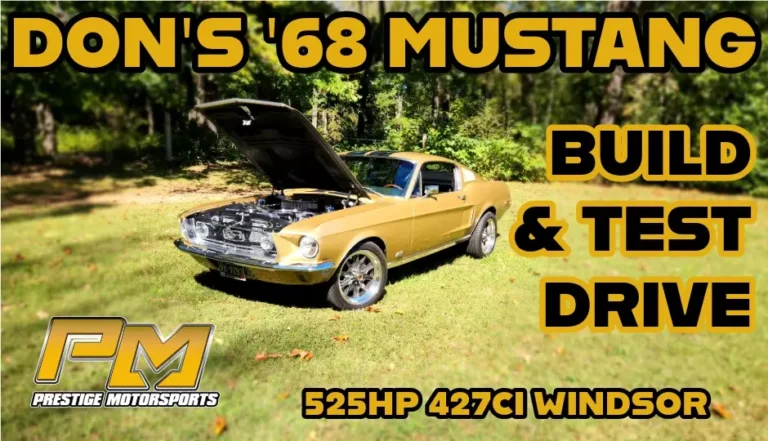Crate Engine vs. Building Your Own
Is It Cheaper to Build an Engine or Buy a Crate?
When your car project is ready for more power, one of the first big decisions you face is whether to order a crate engine or build one yourself. On paper, building it yourself sounds like a money saver. After all, you can buy the parts, set aside some weekend time, and bolt everything together. But here’s the truth: when you look past the sticker price, DIY isn’t the budget-friendly option it appears to be.
At Prestige Motorsports, we’ve built, tested, and supported thousands of engines for street, strip, and custom applications. We’ve also seen plenty of projects come through our doors where a “cheap” DIY build ended up costing far more than a properly assembled crate engine.
So, which is really cheaper? Let’s break it down.
What “Building Your Own” Really Means
When most people say they’re “building their own engine,” they mean they’re taking a tired or worn engine, tearing it down, sending parts to a machine shop, buying new components, and reassembling it. For performance-minded hobbyists, the DIY approach may involve buying a brand-new block, crankshaft, rotating assembly, pistons, rods – the works – and then assembling everything from scratch.
Either way, the reality is the same: you still need a machine shop. The block has to be prepared correctly. The crank, pistons, and rods need to be balanced. Precision machining is not something you do in your garage with a socket set. It requires specialized equipment – and that equipment comes at a price.
The Biggest Misconceptions About Crate vs. DIY
Myth #1: Crate engines are cookie-cutter.
Plenty of people assume a crate engine is “one size fits all.” At Prestige, nothing could be further from the truth. Every engine we sell is tailored to the customer’s vehicle and goals. Whether it’s a hot rod that needs a street-friendly power bump or a street/strip setup that needs to hold its own on Friday night, we don’t pull a generic combo off the shelf. We build a solution around you.
Myth #2: DIY is cheaper.
This one trips up a lot of builders. Parts cost what they cost, and in most cases, Prestige sells them for the same price – or less – than you’d find at retail. What people overlook are all the hidden costs:
- Machine shop fees charged by the hour.
- Specialized tools and measuring equipment you’ll need to buy.
- The hours of assembly you’re not paying yourself for.
- The cost of mistakes when clearances or tolerances aren’t right.
And here’s the kicker: there’s no warranty when you build it yourself. At Prestige, every crate engine we sell is guaranteed and dyno-tested. If there’s a leak or an internal issue, we catch it before it ever goes into your car. That alone saves enormous time, money, and headaches.
Cost Comparison — Crate vs. DIY
| Aspect | Prestige Crate Engine | DIY Build |
| Assembly labor (no dyno) | $1,200–$1,500 | N/A |
| Parts (e.g., Small Block Ford, new) | Included in package pricing | ~$5,000 |
| Machine work | Included | Hourly (varies by shop) |
| Specialized tools & measuring equipment | Included (shop-owned) | Extra (must purchase) |
| Warranty | Included | None |
On the surface, a DIY builder may think, “I’m saving $1,500 in labor.” But the math doesn’t hold up. This holds true whether you’re pricing out a modern LS crate engine or a classic Chevy 350 crate engine. The math looks simple up front, but once you factor in tools, machining, and rework, the DIY route rarely comes out ahead
Installation and Tuning — Where DIY Gets Expensive
DIYers often assume they’ll save even more money by installing the engine themselves. That can work if you pulled the engine and are just dropping it back in. But professional installation is more than bolting everything together.
At Prestige, an installation means:
- Cleaning and touching up the under-hood area.
- Inspecting and rerouting hoses and wiring.
- Adding new connectors where needed.
- Confirming the cooling system, fuel supply, and transmission can handle the new power.
Skip those steps, and you’re not saving money – you’re setting up future problems.
The same goes for tuning. Our engine dyno is reserved for engines we build, but we regularly tune cars with new engines installed elsewhere. Most of the time, those cars arrive with a laundry list of issues that need fixing before we can even put them on the chassis dyno. If everything checks out, we typically charge about four hours of dyno time to dial it in. Either way, the message is clear: experience matters, and the back-end costs of an inexperienced install or tune often wipe out the “savings” of DIY.
Performance, Fitment, and Reliability
Here’s where crate engines shine. Prestige crate engines have an almost 100% satisfaction rate, and more often than not, customers are surprised to find the engine exceeds their expectations. Why? Because we know which combinations of components actually work together.
DIY builders often buy the “best” cylinder heads, cam, or intake based on what they read online, without realizing those parts may not complement each other. Incompatible parts don’t just cost horsepower – they can destroy an engine.
- Incorrect valve-to-piston clearance can grenade a motor in seconds.
- A mismatched cam and valve springs can cause coil bind, bending pushrods and breaking parts.
As we tell customers: it might bolt together, but it won’t last.
The Prestige Approach: Guiding Customers to the Right Choice
When someone comes to us unsure whether to DIY or buy a crate engine, we start with simple questions:
- What are you doing with the engine?
- How do you want it to perform?
- What supporting systems do you already have?
From there, we show what upgrades are required to meet their goals and how different choices affect their budget. Many times, we end up saving customers money by steering them away from overkill parts or mismatched components they don’t really need. The end result is a package that performs as promised – and avoids the “hidden costs” of trial and error.
The Bottom Line – Which Is Cheaper?
Building your own engine looks cheaper on the surface, but the real costs tell a different story. Between machine shop fees, tools, miscommunication, mistakes, rework, installation surprises, and the lack of a warranty, DIY quickly becomes more expensive.
Prestige crate engines roll all of that into one package: expert assembly, dyno testing, warranty protection, and ongoing support. You get proven performance and peace of mind without paying twice for the same job.
If you don’t build engines every day, the cheap route isn’t cheap. Let Prestige build it right the first time.




